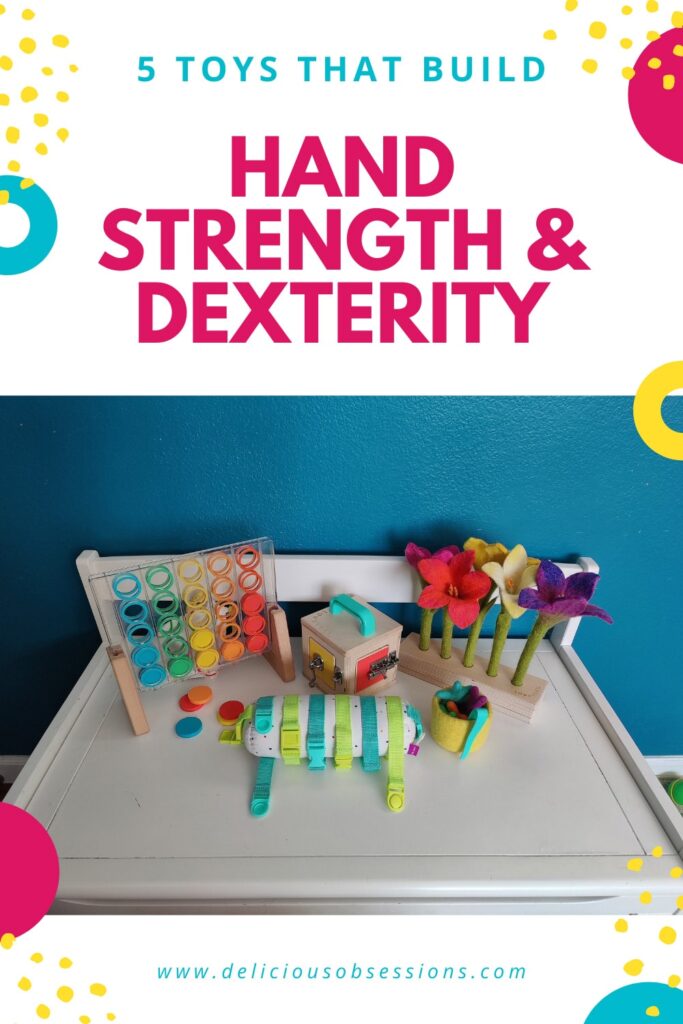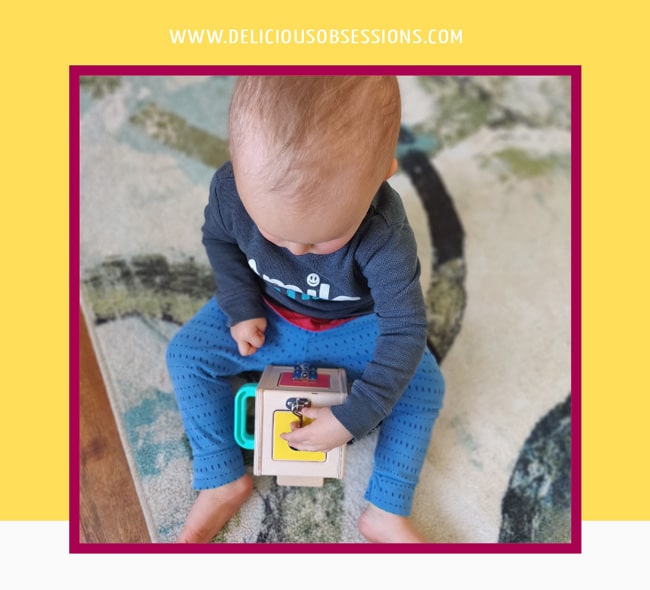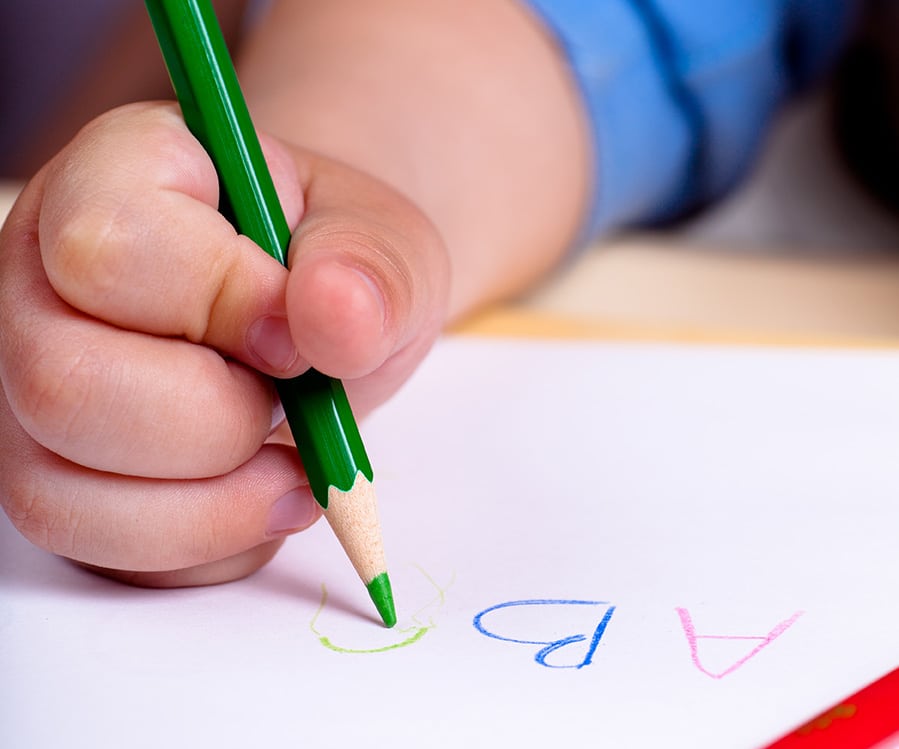FTC Disclosure: Delicious Obsessions may receive comissions from purchases made through links in this article. As an Amazon Associate I earn from qualifying purchases.Read our full terms and conditions here.
The rise of tech devices has had some negative consequences for everyone, including our children. We now have a generation of young children who are not able to write due to poor hand strength and dexterity. This has far-reaching impacts on both their fine and gross motor skills, as well as their education. In today’s post, I share some reasons why this is such an important issue and what we as parents can do about it.
Over the last few months, I’ve been blessed to work with the wonderful and creative company Lovevery. I am thankful for this opportunity for many reasons, one of which is that it has motivated me to learn more about infant and toddler development than I had ever thought I would.
I recently received my fourth play kit from them and it inspired me to learn more about hand strength and dexterity in young children. And that is what led us to this blog post.
Modern Children Are Unable to Write Due to Weak Hands
A couple of months back, my husband and I read about how young children are having more and more difficulty learning how to write because they are not using their hands enough. Too much time on tech devices and flashy toys, and not enough time doing practical, everyday “work” to strengthen their muscles and bones. (source, source, source)
This shocked us.
So we have made an even more concerted effort to make sure Jacob is working with his hands in multiple days every way. Some of this comes in the form of just eating and using silverware, but other things include:
- coloring with large crayons
- “writing” (i.e. using a pen to scribble on paper)
- picking up small things like Serenity Kids and Lesser Evil puffs
- making snowballs
- throwing balls
- stacking random objects or our favorite block set
- gripping our fingers or hands while we lift him off the ground slightly
- climbing
- opening and closing things like gates, doors, drawers
- turning on and off light switches
- helping unload the dishwasher
- playing with our awesome Lovevery toys
- and more…
While we have been focusing on making sure Jacob spends time working with his hands, I wanted to do a little more research on WHY this is so important so I could share this knowledge with other young families. And I’m also going to share five of our favorite toys for helping cultivate dexterity and hand strength.
Let’s dive in!

5 Reasons Why Hand Strength and Dexterity Are Crucial for Baby and Toddler Development
1. Bones & Muscles
Each baby’s hand holds 27 bones and more than 30 muscles! Just like adults have to exercise their bodies in order to keep their muscles and bones strong and healthy, young children require exercise and repetitive use to develop strength and dexterity.
Sally Payne, the head pediatric occupational therapist at the Heart of England Foundation NHS Trust says:
“An overuse of touchscreen phones and tablets is preventing children’s finger muscles from developing sufficiently to enable them to hold a pencil correctly, they say. To be able to grip a pencil and move it, you need strong control of the fine muscles in your fingers,. Children need lots of opportunity to develop those skills.” (source)
2. Fine & Gross Motor Skills
Dexterity and hand strength are required for both gross and fine motor skill development. Without regular daily practice, these muscles will not gain the strength they need in order to promote the proper development of skills later on. Via the Department of Occupational Therapy, Royal Children’s Hospital, Melbourne:
Hand and finger strength is important as it is required for many everyday activities such as doing up buttons and zips, climbing monkey bars or cutting up a piece of steak at mealtimes. It also helps to develop the endurance to complete activities such as writing a full page.
3. Arm Strength
Many people think of hand strength and dexterity as being limited to just the hands. That’s not true, as it affects other areas of the body, like the arms. Working hand muscles also work the arm muscles to build strength for crawling, pulling, climbing, etc. The more children use their hands, the stronger they become and the more easily they will reach pivotal milestones.
If you’re looking for some fun ways to help your little one build more upper-body strength, check out this post from Gympanzees. We are planning on incorporating some of this into Jacob’s routine. The Daily Mom has a really good article about this topic too.
4. More Paths for Learning
Dexterity gives more paths for learning. The more a child can do with their hands, the more they can explore their world. As they go through their everyday play, you will find that different toys and activities are going to require them to utilize different grasps and maneuvering of their hands.
By ensuring your young child has these opportunities, their dexterity grows, learning them to a variety of different ways of playing, and hence, learning (source). As Maria Montessori said: “Play is the work of the child“.
5. Writing
Poor dexterity and hand strength can prevent a young child from learning how to write later on. This is having devastating effects on the education of our younger generations and will only get worse as the use of electronic devices continues to rise. Unless parents make a concerted effort to keep tech devices to a minimum, our children will become weaker and weaker.
“Children are not coming into school with the hand strength and dexterity they had 10 years ago,” said Sally Payne, the head paediatric occupational therapist at the Heart of England foundation NHS Trust. “Children coming into school are being given a pencil but are increasingly not be able to hold it because they don’t have the fundamental movement skills.” (source)

5 Toys that Build Hand Strength and Dexterity
Now that we understand why hand strength and dexterity are so important, let’s look at 5 of my favorite Lovevery toys that help with this. Truly you don’t need anything special to help your little one develop these muscles. Just make sure they are using their hands in a variety of ways each day.
That said, toys are fun, and even more fun when they are specially curated and designed to be developmentally appropriate for the age range of your child. Here are a few of Jacob’s faves.
The Buckle Barrel

Keep your little one busy with no-pinch buckles while building hand strength and practicing bilateral coordination. This pillow is made from organic materials and is great for travel. If you do a lot of driving with your little one, this is a great way to keep them entertained. The suggested age range for this toy is 22-24 months (and beyond) and you can find it in The Companion Play Kit.
Transfer Tweezers and Felt Stars

Practice picking up these felt stars—a fine motor pincer activity. Great for counting and colors too! The suggested age range for this toy is 22-24 months (and beyond) and you can find it in The Companion Play Kit.
The Lockbox

Tinker with mechanical thinking all on their own—and perfectly portable for problem-solving with little hands. The suggested age range for this toy is 19-21 months (and beyond) and you can find it in The Realist Play Kit.
Felt Flowers in a Row

Plant them, pick them, and make a bouquet. The hands are used in all sorts of ways with this fun toy! The suggested age range for this toy is 25-27 months (and beyond) and you can find it in The Helper Play Kit.
Drop & Match Dot Catcher

Line up colors vertically, horizontally, or any which way while developing coordination and fine motor skills. The suggested age range for this toy is 25-27 months (and beyond) and you can find it in The Helper Play Kit.
I hope this post has been helpful and inspirational! Here’s to growing healthy, happy, strong, capable children. What kinds of activities would you add to this list? How do you help your little one improve their hand strength and dexterity? Leave a comment below! 🙂

